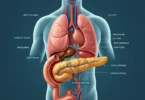Treatment Of Type 1 Diabetes
Type 1 diabetes is base on an absolute insulin deficiency, which is why patients use insulin throughout his life. Previously often bovine and porcine insulin was injected but now only artificially produced insulin is used. Patients should always carry a blood glucose meter and insulin syringes with him. Nutritionists and dietitians clarify that what is impact of their lifestyle and diet on disease.
Diabetes Education
Type 1 diabetes patient should visit specific diabetes education system immediately after the diagnosis. Here they learn the carbohydrate content of different foods and estimate how much insulin a body needed, when and for what kind of foods.
Conventional Insulin Therapy
Treatment of diabetes mellitus type 1 consists in replacing the missing insulin. The insulin is injected under the skin in subcutaneous fatty tissues of abdomen. The required dose depends on the current blood glucose level, the amount of ingested carbohydrate and the planned physical activity. To learn the insulin therapy, there are special training courses for patients and their relatives. The administration of insulin may need to be done in the form of injections, because when administered orally (as a pill), the insulin would be destroyed by digestive enzymes. The development of modern injection devices (pen or pump) allows people with diabetes a more simple, discrete and precisely administration of insulin dosed.
People with type 1 diabetes mellitus are life-long dependent on the administration of insulin, cure possibilities are not exist yet.
Intensified Insulin Therapy (Basal-Bolus Principle)
As part of intensified insulin therapy a long-acting insulin is usually injected one to two times daily to cover about half of the basic need for insulin. The amount of insulin injected varies according to the composition of the meal and time of day. The basal-bolus principle requires a good cooperation of patients, blood sugar level must be measured regularly to prevent over or hypoglycemia.
A major advantage of intensive insulin therapy is that the patient is free in the choice of food as well as range of motion, because the blood sugar is always adapted. If blood sugar levels are permanently set well, the risk of complications decreases significantly.
Insulin Pump
The insulin pump is particularly suitable for diabetics with an irregular rhythm of life (eg. As shift workers). Insulin pump is used to inject insulin. Here is an insulin reservoir with a connected needle, which is placed in the subcutaneous fatty tissue of the abdomen. Insulin pump contains only short-acting insulin, which it emits continuously through the needle . The pump is continuously worn on the body. After every 2 days the needle and the tubing system must be replaced.







